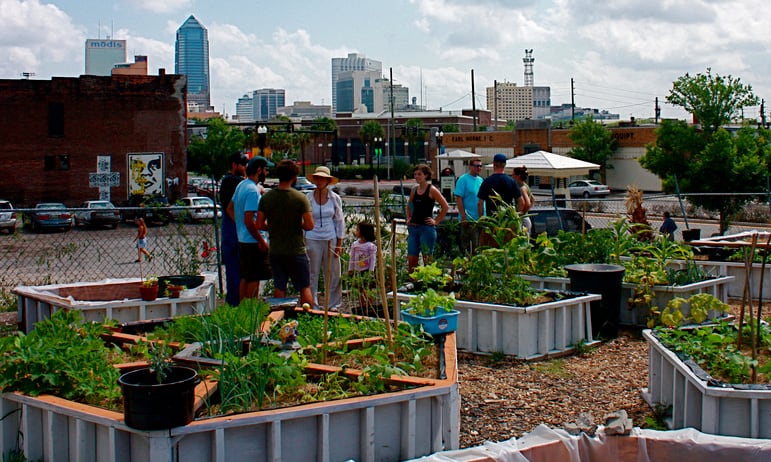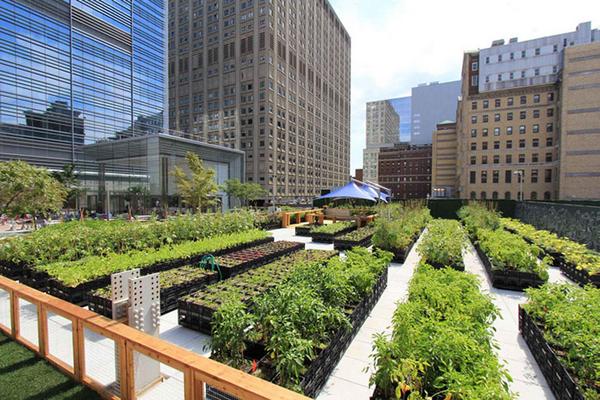How City Blooming can Save You Time, Stress, and Money.
How City Blooming can Save You Time, Stress, and Money.
Blog Article
All about City Blooming
Table of ContentsSee This Report on City BloomingCity Blooming Can Be Fun For EveryoneThe Definitive Guide to City BloomingThe Only Guide to City BloomingOur City Blooming Diaries
Interested in expanding food available in the City of Chicago? Thinking of beginning a community garden? Modifications to the Chicago Zoning Regulation enable farming uses like area gardens and urban ranches in lots of components of the city. Below is a checklist of frequently asked inquiries relating to the rules and laws that cultivators ought to think about when planning an urban farming task.
The zoning amendment does not change any type of other codes handling composting, building authorizations, acquiring or renting City possessed property, service licenses or environmental contamination. There are existing codes that control these issues and they remain in full impact and might be appropriate to your job. Area yards are typically owned or taken care of by public entities, public companies or community-based companies and maintained by volunteers.
Urban farms expand food that is meant to be marketed, either on a nonprofit or for-profit basis. Due to their industrial purpose, metropolitan farms need a service permit. Yes. A neighborhood garden is allowed to market surplus produce that was grown on site if the sales are accessory or secondary to the yard's main purpose defined above.
The smart Trick of City Blooming That Nobody is Discussing
Composting is allowed yet just for plant product that is produced and made use of on site. The quantity of compost material can not surpass 25 cubic backyards at any kind of offered time according to the requirements in 7-28-715 of the City's Municipal Code. Yes. Due to the fact that the dirt at most new garden sites needs changing, compost, soil, wood chips, or various other materials can be obtained to construct or enhance the expanding space - City gardening.

If a structure authorization is needed after that the hoophouse will certainly be thought about an accessory structure. You can figure out even more about the building permit demands by speaking to the Division of Structures. The 25,000-square-foot size restriction is planned to avoid a single community yard from dominating a given block or diminishing the block's existing residential or business personality.
The restriction does not apply to yards situated in Public Open Area (POS) districts. Can there be more than one neighborhood yard that is 25,000 square feet on a single block? Secure fencing is not called for, nevertheless, gardens that have large car park areas may be called for to mount secure fencing or other landscaping attributes.
City Blooming - Truths
B1 & B2 districts need that all business use activities be conducted indoors. Is fence required for metropolitan ranches? Fences might be required, along with landscaping and testing, for specific parking areas and outside work or storage locations depending on location and the details activity taking location.
Urban ranches need structure permits and zoning authorizations prior to construction (garden care). Various other kinds of city testimonial might be required depending on certain frameworks, activities, size, landscape design, licensing, public heath and stormwater management issues.
The Department of Company Matters and Consumer Protection can help establish the certain type of organization permit that's required. Off street auto parking is needed for the majority of commercial tasks in Chicago. The needed number of auto parking areas is based on the number of employees functioning on site and not the square video of the growing room.
Some Known Questions About City Blooming.

A city farm can offer compost product produced on website, check my site nevertheless, the operation must conform with the guidelines in 7-28-715 of the Chicago Municipal Code. Aquaponic systems are enabled inside on urban ranches in several zoning areas.
Up to five hives or nests of honey bees might be maintained as an accessory usage. Beekeepers need to sign up with the Illinois Division of Agriculture. To find out more about the recommended zoning amendment you may speak to the Department of Real Estate and Economic Development, Bureau of Planning and Zoning at 312.744.8563.
Farming in cities and metropolitan areas A city ranch in Chicago. Urban farming describes various practices of growing. https://danielnold94107.wixsite.com/my-site-1/post/city-gardening-a-green-oasis-in-urban-spaces, processing, and dispersing food in metropolitan areas. The term additionally relates to the area activities of animal husbandry, tank farming, beekeeping, and gardening in an urban context. Urban agriculture is distinguished from peri-urban farming, which occurs in rural areas at the side of suburban areas.
A Biased View of City Blooming
It can entail a motion of organic growers, "foodies" and "locavores", who look for to create social media networks established on a common ethos of nature and area holism. These networks can create by method of official institutional assistance, ending up being integrated right into regional town preparation as a "transition town" motion for sustainable urban advancement.
The much more straight access to fresh veggie, fruit, and meat products that may be know with city agriculture can boost food protection and food safety while decreasing food miles, causing lower greenhouse gas exhausts, thus adding to climate modification reduction. Several of the first proof of urban farming comes from Mesopotamia.
Report this page